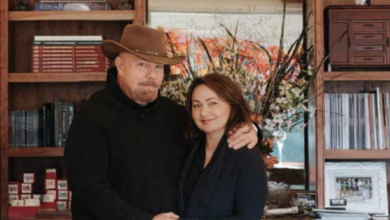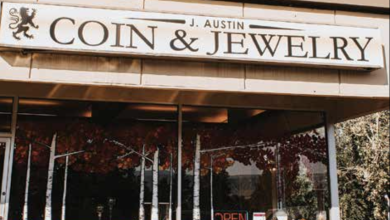J. Austin & Co. of Ashland Coin & Jewelry Talk
 Mark Hutto of J. Austin & Company answers commonly asked questions.
Mark Hutto of J. Austin & Company answers commonly asked questions.
How do I know if an item I have is real gold?
When looking to sell gold jewelry the markings are a key indicator as to the gold content and the value. American markings after 1900 are very clear with the traditional 10K, 14K and 18K stamps. However, many pieces that are antique or come from overseas are not as clear. For example, British made pieces may be marked .333 which indicates 9K gold. .585 is the equivalent of our 14K gold marking and .750 is indicative of 18K gold. Gold jewelry made in the Middle East might contain Arabic numerals, while Asian jewelry which is often 18K or 22K has many different markings. Being professionals in the buying business we recognize these markings and know how to test gold to insure it is marked properly. Of course yellow dental gold is never marked, but is commonly 16K gold.
Are all marked items authentic?
Most gold items that are marked 10K, 14K or 18K are authentic. Sometimes these stamps are followed by a marker indicating gold plating such as GP, GF (gold filled) or HGE (Heavy Gold Electroplate). Also, any fraction in a marking such as “1/20” indicates that the item is plated. If you are in doubt, bring it in, we can evaluate it for you free of charge. Also, keep in mind older items and worn items might not have a marking at all, but could be gold.
Do plated items have much resale value?
Unfortunately there is no real market for plated items. The precious metal content on plated items is so little, that it costs more to remove the plating than what can be recovered. There is also no substantial collectibles market for plated goods. For this reason we do not purchase plated items.
How can you tell if an item is plated?
The first thing we do is look at it, gold items that are solid do not change color, flake, nor turn green, so any indication of these point towards a plated item. The next step is to remove a microscopic portion of the item and test it with acid. Acid will not dissolve gold and certain mixtures of acid will tell us what the purity of the gold is. The final test we use is unique in the valley. We use a specific gravity machine to determine purity. This is used for both coins and jewelry. It is very difficult to fake the specific gravity of a precious metal, so this particular test is very valuable.
Does the specific gravity test hurt the item?
No, it leaves no marks whatsoever. It is simply a method of weighing an item in water, then in air, in order to determine its’ metal content. We of course do not use this test with watches or any item that might be susceptible to water damage.
If I have diamonds in my jewelry, how do I determine the value of my own diamonds?
If you have a GIA certificate for your diamonds, we can provide you with online resources to find out the retail value of your diamonds. Generally speaking, diamonds less than half a carat in size have a lot lower resale value than larger stones. Round, gem quality diamonds one carat or larger are the highest in demand. If you don’t have a GIA certificate we can evaluate your diamond for the purpose of finding its’ value. We can even involve you in the process of grading it to make sure you become more knowledgeable in the trade. We have found that customers are more comfortable if they understand how the value of their items is determined, and they are in turn more likely to recommend their friends to visit us.
Learn More:
If you have a coin or jewelry question, stop by and see Mark, Andrea or Raymond at 1642 Ashland St. two doors down from Radio Shack.
http://jaustinco.wordpress.com/




